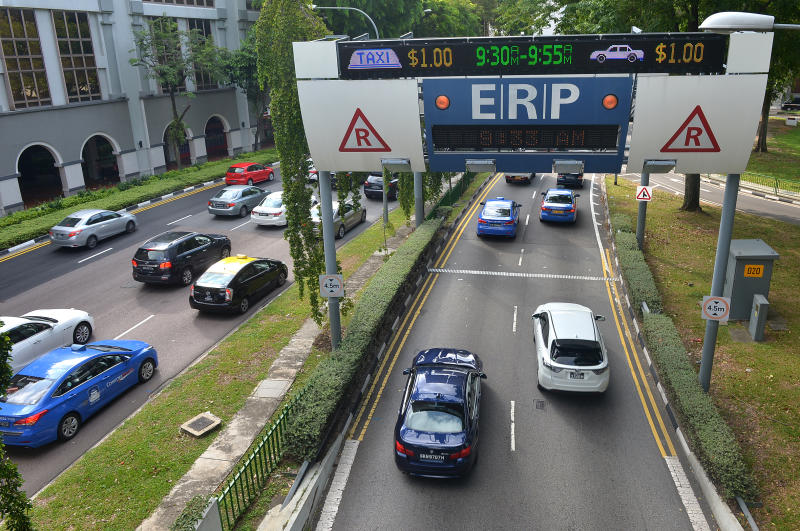Electronic Road Pricing turns 20 in April: Notable milestones over the years
Sign up now: Get ST's newsletters delivered to your inbox

Since the Electronic Road Pricing was implemented here in 1998, other countries have gone on to adopt similar systems.
PHOTO: ST FILE
Ng Huiwen
Follow topic:
Singapore's Electronic Road Pricing (ERP) - touted as the world's first electronic toll system of its kind - turned 20 this month (April).
While most drivers believe that the ERP has influenced their travel patterns significantly, going by a recent poll by The Straits Times and the Automobile Association of Singapore, many remain sceptical about its effectiveness in controlling congestion.
Since it was implemented here in 1998, other countries have gone on to adopt similar systems. Recently, Jakarta said it is aiming to introduce ERP in 2019.
Here's a look at Singapore's ERP milestones over the years.
1. Before ERP, there was the Area Licensing Scheme
To tackle congestion on the roads, Singapore implemented various road pricing mechanisms, starting with the Area Licensing Scheme in June, 1975.
This came at a time when car ownership was on the rise and there was a growing need to curb its usage, particularly in the Central Business District (CBD).
Motorists had to pay for a special supplementary licence if they wanted to enter the CBD's restricted zone.
At $3 a day or $60 a month, motorists with the licence were able to enter the restricted zone for an unlimited number of times during that period. Those who were caught without a licence faced a $50 fine.
Other traffic management measures at the time included the Park-and-Ride scheme and car pooling.
To control the vehicle population, the vehicle quota system, which required owners to obtain a Certificate of Entitlement for their vehicles, was introduced in 1990.
2. Cabinet gives ERP the green light in 1989
In July 1989, the Cabinet gave the go-ahead for the ERP system, with an initial target to introduce it in five years' time.
Then communications and information minister Yeo Ning Hong said that in-principle approval was given two years prior to that to study the range of ERP equipment available worldwide.
Soon after in September 1989, firms were invited to submit pre-tender qualifications for the project. At least six foreign companies - from Britain, Norway, the United States, Holland, France and a US-Japan tie-up - showed interest in the project.
3. Rigorous 12-month test before ERP launch
The first three ERP gantries were set up on an unopened stretch of the Seletar Expressway near Woodlands in 1996 - but these were all part of an ERP test site.
The $197-million system, produced by a Singapore-Japan consortium led by Philips Singapore, underwent rounds of tests to its gantries and in-vehicle units for 12 months beforethe system's launch.
4. ERP officially introduced in 1998
The gantry-based ERP that motorists are familiar with today was activated in April 1998.
The system was implemented in stages, beginning with the CBD, and on the Central Expressway, Pan-Island Expressway and the East Coast Parkway in the following two years.
It was later extended to other expressways and major arterial roads, such as Orchard Road.
In preparation for the launch, motorists had to make appointments at vehicle inspection centres and workshops to get their vehicles fitted with an in-vehicle unit.
The unit communicates with the antennae on ERP gantries to allow the correct toll to be deducted from the CashCard slotted into the unit.
5. ERP 2.0, featuring satellite-based system, from 2020
In February 2016, the Land Transport Authority announced that it will build the next generation ERP system from 2020.
Instead of physical gantries, ERP 2.0 will rely on satellite navigation technology and will have to ability to charge for distance travelled.
Singapore company NCS and Japan's MHI Engine System clinched the deal with a bid of $556 million.
When it is ready, the new system will also be able to facilitate coupon-less street parking and automatic charging for off-peak car usage.
It will also push out real-time traffic information to all road users through an intelligent onboard unit.
Motorists will have to install a new onboard unit for their vehicles, which will be free for the first unit.

